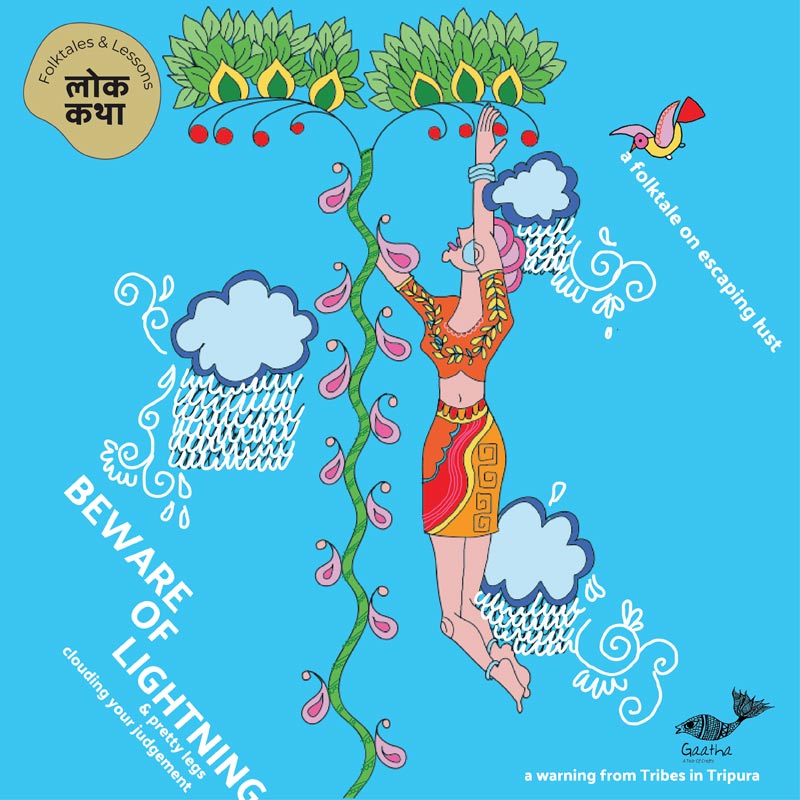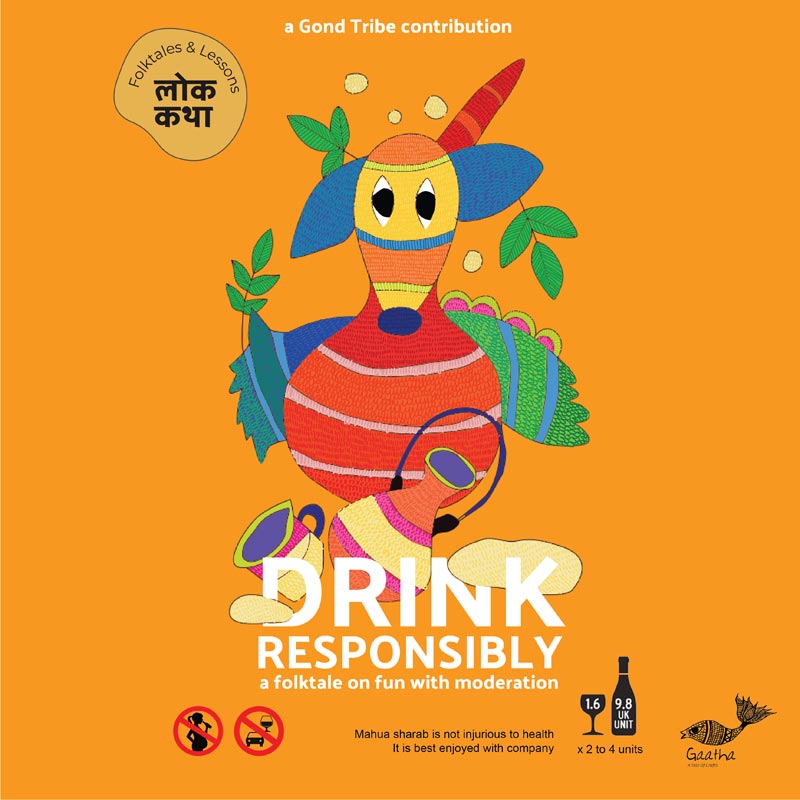INDIAN TRIBAL FOLKLORE

Tribal folklore’s retold as more than just an indigenous bedtime story. A colourful visual bringing together modern life lessons keeping tribal fantastical tales alive for you.

A Sora folktale describing, Once a time when even humans had large tails of various sizes, shapes and colours. Amidst the humans blatant mismanagement of the tails that caused accidents and discomfort, the God Kitunga, or Jagannatha, paid a visit to the Sora tribe amidst the pandemonium. As usual, the marketplace was brimming with people. As the Lord walked around, a passerby stepped on His tail, knocking Him down.
Injured as He was, He even lost two of His teeth. Lord Jagannatha slowly got up as two of His teeth fell out of His mouth. People had started to flock around Him, unable to contain their laughter. The sound of their laughter echoed in the Lord’s ears. It agitated Him so much that He plucked His tail out as He rose to His feet. He took the tail in His hands and dumped it on the ground. Soon, the tails of everyone around Him fell down as well. All the tails slithered away, with the Lord’s tail turning into a palm tree and those of the worldly beings becoming tall grass blades. The Sora tribesmen then began tying those tall grass blades into fat bundles, using them to sweep the floor. Within a few days, the peace that had prevailed before the population explosion was restored. It is for this reason that the elders say that change and evolution are the only constants.

The Baiga tribe from Madhya Pradesh recites tales of women having beards and moustaches, taboo today thanks to current societal beauty standards. Facial hair was beautiful (and still is) but taken away by a goat on whom we see little beards even today. This enthusiastic and newly decked goat ventured into the jungle towards the King, the mighty lion, in an attempt to win over his daughter for her hand in marriage. Unfortunately, the goat and his brand new beard, a sign of beauty, was never to be seen again.

A folktale for the ages from the Tribes of Tripura with hints of lust, caution, lots of fleeing and even their own explanation against science. A beautiful young girl from Tripura is said to have lifted up her skirt in order to cross a stream and subsequently reveal her legs that our rigid dress codes were oh so worried about. This in turn led to her brother falling in love with her and forcing a marriage against her will and ignoring the shame that could be possibly brought upon the family.
Her lack of choice in turn forced her to climb onto the indigenous Chethuang tree that even today is said to demonstrate a flat top because of this young girl. She sang to the tree to climb higher and higher into the sky away from her family and on overcast days hung her legs down to create lightning and instigate her family members to begin chopping the tree to make thunderous sounds.

Several Adivasi legends subtly teach responsible drinking. The tribal deity Pashupati is said to have started babbling like a parrot after drinking a touch too much of mahua sharab. He drinks some more and roars like a tiger. A few drinks later, he can’t stand on his feet and starts rolling on the ground like a boar. Many Gond artworks feature Pashupati with motifs of parrots, boars and tigers as the Lord himself starts to lose control of his senses after going overboard with the otherwise holy drink that has an important status in the Gond tribe.
